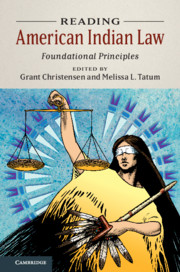Introduction
Responding to a Changing Field
Published online by Cambridge University Press: 11 December 2019
Summary
Thirty years ago the Indian law community was small enough that it was possible for even a scholar new to the field to keep up with most of the Indian law scholarship published annually. However, as our field has proliferated, it has also fragmented, and today more than two hundred pieces of new legal scholarship are published annually in law reviews alone.* These law reviews are not just ivory tower musings; there are now some scholarly contributions which are as fundamental for the study of Indian law as many cases or statutes. These articles help to contextualize the changing doctrines announced by the Court, reconcile contradictory authority, challenge assumptions of race/place/power, and push for courts, tribal leaders, legislators, lawyers, educators, and students to adopt new ways of thinking about our fundamental doctrine. However, with so many new contributions we realized that new scholars may miss some of the most impactful articles, and even the progenitors of the field will have forgotten about some of the best ideas put forward by colleagues over the years. While several federal Indian law textbooks exist to preserve judicial doctrine, there is no definitive collection of related legal scholarship.
- Type
- Chapter
- Information
- Reading American Indian LawFoundational Principles, pp. 1 - 18Publisher: Cambridge University PressPrint publication year: 2019

